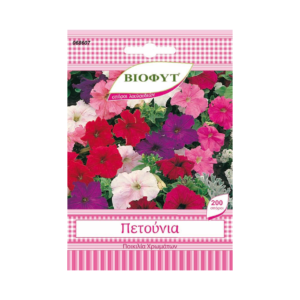Euphorbia
Euphorbia
Euphorbia lactea cristata, is an easy-to-grow succulent, resulting from the grafting of two species. That is, two plants in one! Its upper part is Euphorbia lactea and its color is silver-grey, which can turn reddish if the plant is happy in its environment. Its lower part is usually Euphorbia neriifolia. Its shape resembles a coral and resulted from a normal mutation of Euphorbia lactea and is also known as Coral plant. Prefer bright spots in the growing area. With gradual acclimatization, it can also live in direct sunlight.
Due to its nature, it does not need frequent watering. Apply watering when the substrate is completely dry, and if you are not sure that it is dry, it is better to leave it for a few more days. In winter, when the plant enters a state of dormancy, watering should be reduced or stopped.
More Products
Phlox
PhloxPhlox (with more common species Phlox drummondii and Phlox paniculata, Polemoniaceae) is a popular herbaceous ornamental that grows mainly as an annual, but in areas with mild winters it can be planted as a perennial. It is a genus of at least forty species and many hybrids have been created. Phlox belongs to the Polemoniaceae family, is native to North America and has historically been a fixture in gardens and parks around the world. The phlox Phlox drummondii is a genus of many species, annual and perennial, and belongs to the Polemoniaceae family. It comes from North America and is a plant with great participation in landscape architecture.
Poppy
PoppyThe poppy is a plant native to Europe, North Africa and the temperate regions of Asia, while it has acclimatized in North and South America. It got its name from the Celtic word “papa” which means “food for babies” because the Celts used to mix poppy juice in baby creams, as a medicine for childhood illnesses.
Petunia
PetuniaPetunias have compact, lush vegetation and fast growth, ideal for planting in flower beds and pots without needing too much care. They are particularly popular for their abundant flowering which, with proper care, lasts from early spring to late autumn. Petunia flowers, depending on the variety, can reach a size of 10-15 centimeters and we can choose between dozens of color combinations. There are many different species and varieties of petunias to plant in the garden and in pots. Petunias are divided into three main categories: a) large-flowered varieties of petunias (grandiflora type) with larger flowers, b) multi-flowered varieties (mutliflora type) with more medium-sized flowers and c) thousand-flowered varieties (milleflora type) with numerous small flowers
Snapdragon
SnapdragonThe Snapdragon, a favorite ornamental plant with wonderful flowers, is planted in the spring and is a characteristic plant of the Mediterranean, with rich vegetation. We will find Snapdragon in dwarf varieties from 20-40 cm, medium height from 40-60 cm and tall varieties from 60-120 cm. Although a perennial plant, it is usually planted as an annual in gardens and in pots on the balcony to give us rich flowering and impressive color combinations.
Nice of the Day Flower
Nice of the Day FlowerThis plant grows in the spring with beautiful clean green foliage producing beautiful colorful flowers with bright “neon” colors that close at night. Very easy to grow, the beauty of the day is the star in a small garden full of “wild flowers”. The beautiful of the day does not need particularly fertile soils, but sandy and well-drained. It is resistant to the marine climate.
Zinnia Giant
Zinnia GiantZinnia is an annual ornamental plant that impresses with the variety of colors and shapes of its flowers. The zinnia has upright strong shoots with a length of half to one meter and large flowers that remain in bloom throughout the summer. We can find tall and short varieties of zinnia and plant them in a pot but also in a rock garden, on the lawn, and in flower beds, in various combinations with other herbaceous flowering plants.









